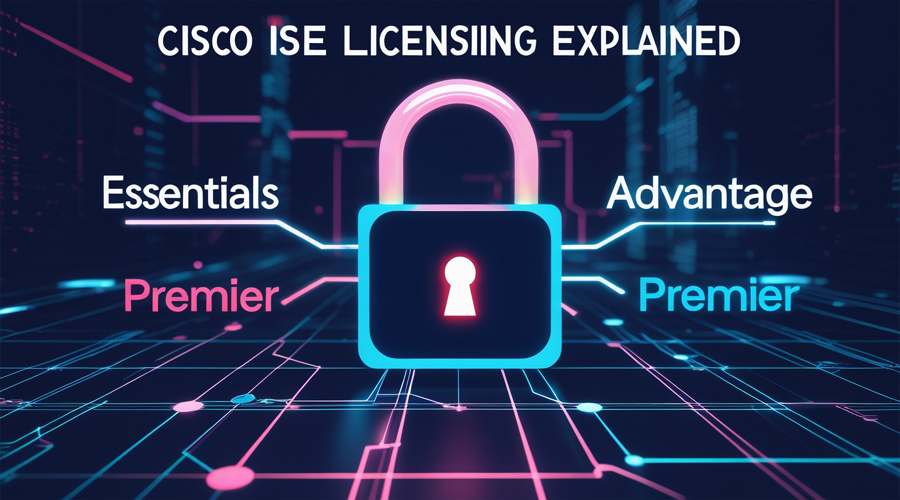Cisco ISE Licensing is an important factor for organizations planning to implement network access control and identity management. Cisco Identity Services Engine (ISE) is considered a market leader, offering centralized authentication, authorization, and accounting (AAA), along with advanced features such as endpoint profiling, policy enforcement, and secure guest access. Unlike a one-size-fits-all product, Cisco ISE uses a tiered licensing model designed to meet different business sizes and security requirements.
For professionals who want to prepare for Cisco ISE training, understanding the licensing model is critical. It not only defines which features are available but also determines scalability and integration with the overall security architecture.
Why Licensing Is Central to Cisco ISE Deployments
Licensing is more than a contractual obligation; it is a roadmap for functionality. Each tier of Cisco ISE licensing unlocks a progressively richer set of capabilities. Organizations that start with Essentials can later move to Advantage or Premier as their security requirements grow.
A practical example:
- A small retail business may only need Essentials to enforce role-based access and basic guest Wi-Fi control.
- A mid-sized healthcare provider may need Advantage to enforce posture compliance and integrate with Active Directory for staff and patient access.
- A global enterprise in finance may require Premier for advanced integrations with Cisco SecureX, Firepower, and pxGrid to automate threat responses.
This flexibility ensures organizations don’t overpay for features they don’t use while leaving room to scale.
Cisco ISE Licensing Overview
ISE licensing from Cisco is structured across three levels—Essentials, Advantage, and Premier Each higher tier includes all features of the previous one, along with new capabilities. Let’s dive deeper:
1. Cisco ISE Essentials – The Foundation
The Essentials license is designed to provide the baseline for identity and access control.
Key Capabilities:
- Centralized access controls for wired, wireless, and VPN connections are known as AAA (Authentication, Authorization, Accounting).
- Guest Access: Simple guest portals for contractors or visitors.
- Basic Profiling: Identify endpoints using DHCP, RADIUS, or SNMP attributes.
- Device Administration: Limited TACACS+ features for network device access control.
- Role-Based Access Control (RBAC): Define user/device roles and enforce them across the network.
Use Case Example:
A 200-employee software company needs to ensure only registered staff devices connect to the corporate Wi-Fi, while visitors get guest access. Essentials provides sufficient control without requiring advanced integrations.
2. Cisco ISE Advantage – Enhanced Security and Visibility
The Advantage license is where Cisco ISE starts to show its full potential, especially for organizations with compliance or visibility requirements.
Key Capabilities:
- Full Device Profiling: Detect devices using deep profiling methods (NBAR, NetFlow, DHCP fingerprinting).
- Posture Assessment: Ensure endpoints comply with antivirus, patches, and OS requirements before granting access.
- Integration with Identity Stores: Connects with Active Directory, LDAP, or certificate-based authentication.
- Policy Enforcement Across Domains: Manage consistent policies for wired, wireless, and VPN endpoints.
- Basic Third-Party Integrations: Share data with SIEM tools for monitoring.
Use Case Example:
A hospital network that requires posture compliance (e.g., ensuring all devices have updated antivirus before accessing patient data) benefits from Advantage. It also integrates with Active Directory for role-based policies between staff, doctors, and admin users.
3. Cisco ISE Premier – Enterprise-Grade Security Automation
The Premier license is the most advanced tier, providing enterprise-grade orchestration, automation, and integration.
Key Capabilities:
- Cisco TrustSec Integration: Simplified segmentation using Scalable Group Tags (SGTs).
- Advanced Threat Defense: Integration with Cisco SecureX, Firepower, and other security solutions for automated response.
- pxGrid Ecosystem: Share contextual identity and threat data with third-party solutions like Palo Alto, Splunk, and Check Point.
- Dynamic Segmentation: Automatically assign VLANs or apply ACLs based on device identity, posture, or threat status.
- Advanced Reporting and Analytics: Comprehensive dashboards tailored for compliance standards such as HIPAA, PCI-DSS, and GDPR.
Use Case Example:
A multinational bank with tens of thousands of employees uses Premier to enforce network segmentation across regions, integrate threat intelligence feeds, and automate security responses when a compromised device is detected.
Subscription Model and Scalability
Cisco ISE licenses are now primarily subscription-based, which provides ongoing feature updates and support. Licenses are counted per user or device session. Organizations can mix license types as needed — for example, Essentials for contractors, Advantage for corporate users, and Premier for critical infrastructure.
Key Considerations When Choosing a License
| Key Consideration | Details |
| Compliance Needs | Industries under strict regulations usually need Advantage or Premier for reporting and posture enforcement. |
| Scalability | Organizations with rapid growth should plan ahead, as upgrading from Essentials to Premier may require reconfiguration. |
| Integration Strategy | If integrating with Cisco DNA Center, Firepower, or third-party SIEM/EDR solutions, Premier is often the best choice. |
| Budgeting | Essentials may look cheaper upfront, but Advantage and Premier often provide better ROI when considering reduced breaches and compliance costs. |
Frequently Asked Questions
Q: Can we start with Essentials and upgrade later?
Yes. License migration is supported by Cisco ISE, allowing businesses to grow without having to replace their infrastructure.
Q: How do licenses apply to guest access?
Guests are counted as endpoints and consume licenses, so organizations with high visitor traffic must plan capacity accordingly.
Q: Are perpetual licenses still available?
Cisco is moving toward subscriptions, but some legacy deployments may still operate under perpetual models.
Conclusion
Cisco ISE Licensing is a critical element in shaping modern security strategies, offering three tiers—Essentials, Advantage, and Premier. Essentials lays the foundation for secure access, Advantage enhances compliance with posture assessments, and Premier provides advanced automation, segmentation, and integrations.
For professionals and IT teams who want to pursue Cisco ISE training, mastering the licensing model is vital. It influences deployment design, budget planning, and long-term scalability. By selecting the right tier, organizations can align security goals with business needs, while learners gain valuable insights to build efficient, scalable, and future-ready identity and access management solutions.
